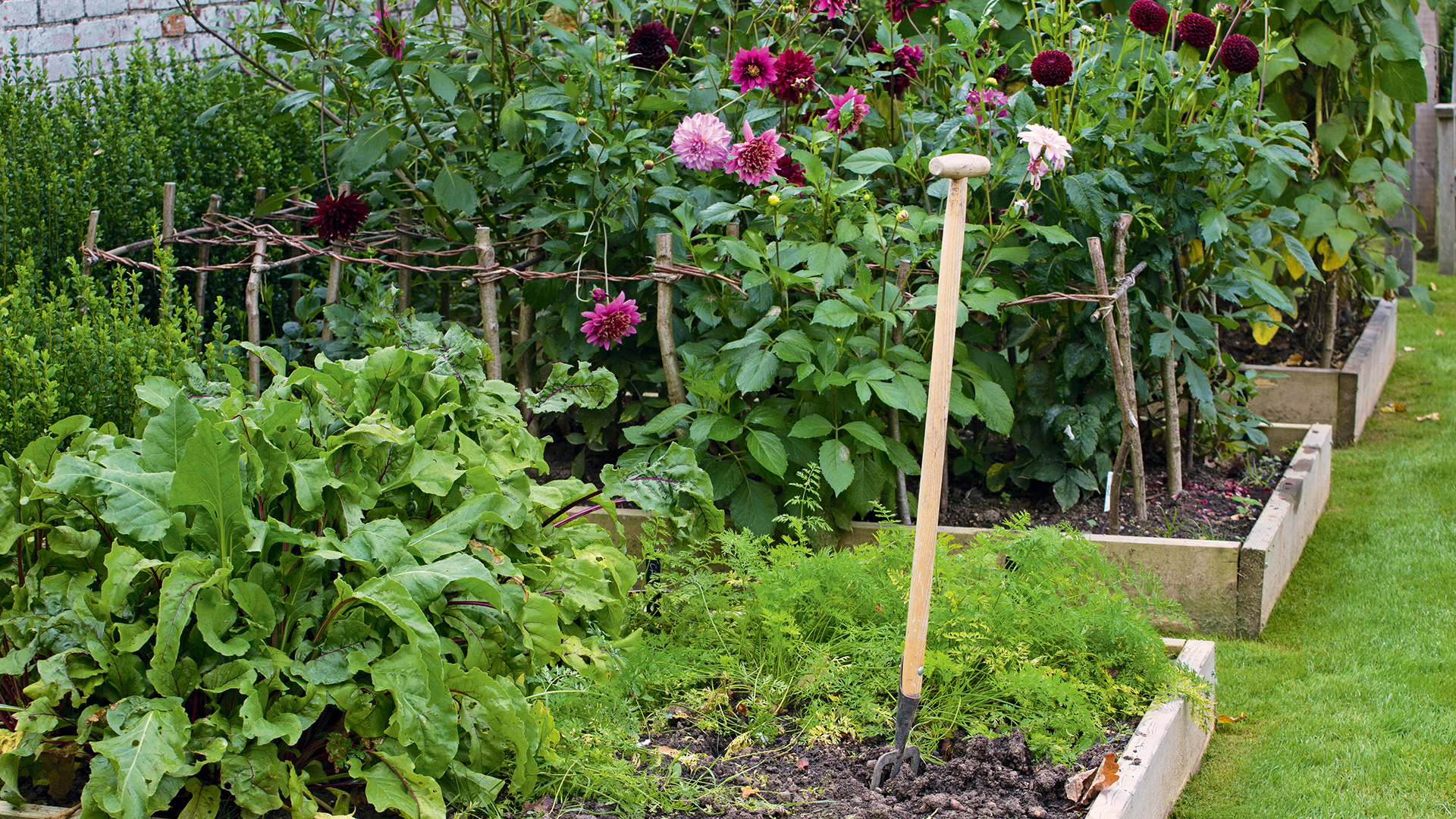Monty Don’s brilliantly simple tip for building raised beds in the garden
Raised beds offer endless possibilities for growing crops and flowers, and they are so easy to include thanks to this advice from the celebrity gardening expert


Whether you want to grow your own produce, zone plants, or improve your soil, raised beds are the ideal solution. It’s tempting to invest in a flat-pack kit, but celebrity gardening sage Monty Don has a clever tip for building attractive raised bed garden ideas that couldn’t be simpler.
Don shared the many benefits of adding raised beds to the garden in a video for BBC Gardener’s World. He explained that not only will they enormously improve drainage on heavy soil, but they 'warm up quicker in spring, and mean you can focus all your energy into a very contained area. You can also plant them a little more densely.’

Don then shared his brilliant tip for building raised garden beds – using scaffolding planks, which he says are ideally suited to the task. 'They’re very heavy, very thick, not too expensive, and you only need a post in each corner to support them because they’re rigid; they hold themselves into position.’
He also revealed that the posts should be set just an inch below the level of the soil. ‘They come in 13ft lengths, which is about the right length,’ says Don. If you can’t get hold of scaffolding planks, you can ask a local sawmill to cut pieces of wood to the same proportions.
The tutorial also explained that the length and width of beds is based on an old monastic principle. This dictated that you should be able to kneel between the beds, but should also be able to reach halfway across so you never have to tread on them.
‘The important thing is to keep off it,’ says Don, ‘because it’s compaction we want to avoid.’

The first thing to consider when building raised beds is to choose the right site. Plants all have their own individual needs in terms of sunlight, so you can’t position sun-loving species in deep shade and vice versa. Most fruits and vegetables will benefit from a sunny spot.
Design expertise in your inbox – from inspiring decorating ideas and beautiful celebrity homes to practical gardening advice and shopping round-ups.
Also consider access to your water supply and drainage – avoiding low, waterlogged areas. Don’t position a raised bed right next to a wall or fence, as it will shelter the plants from rain.
Next, ensure the size is right. Monty Don’s suggestion of 13ft is an ideal length, but the width should be no more than 60 inches if you want to access plants in the middle.
Timber beds are straightforward to build on a DIY basis using scaffolding boards. First, dig over the soil to level the surface and clear out weeds and debris. Then, stake out the corners with wooden posts; these should be around 2x2 inches. If you want to add netting to protect crops, then make the posts taller than the planks’ width.
Position the scaffolding boards in place, and bed the edges around an inch into the ground, before screwing or nailing them to the planks.
You can build a raised bed directly on top of grass, but ideally you should insert a weed-proof liner, or line it with refuse sacks, adding holes for drainage.
Finally, fill with a soil mix tailored to what you want to grow. A good general mix is two thirds’ multi-purpose compost to one third garden soil or John Innes. Enrich this with some organic matter, such as well-rotted manure or garden compost. The addition of sharp sand will aid drainage.
What should I plant in a raised bed?

You can grow almost anything in a raised bed, but certain plants will benefit more than others:
Evergreen shrubs make striking architectural features year round when planted in raised beds.
A cut flower patch is ideal to grow in raised beds, as you can plant more densely. A dahlia bed would look stunning come late summer, while sweetpeas need plenty of support.
Salads and leafy greens are perfectly suited to raised beds, as they like well-drained soil. Cut-and-come-again varieties will also be easier to access.
Herbs planted together in a raised bed near the kitchen will be a useful and aromatic addition.
Crops with long growing seasons, such as onions, are good choices for raised beds, as the soil warms more quickly than in the ground, extending the growing season.
Root vegetables work well as they need rock-free soil. If you build your raised beds with taller posts, you can also more easily net your crops to protect them from pests.
Plants with specific soil needs are ideally suited to raised beds. For example, raspberries, blueberries and cranberries like acidic soil, so you can fill the bed with ericaceous compost.

Melanie has worked in homes and gardens media for two decades. Having previously served as Editor on Period Living magazine, and worked on Homes & Gardens, Gardening Etc, Real Homes, and Homebuilding & Renovating, she is now focusing on her passion for gardening as a Senior Editor at Gardening Know How. As a keen home grower, Melanie has experimented with pretty much every type of vegetable at some point – with mixed results. Often it is the simplest things that elude you, which may explain why she just can't seem to master zucchinis.